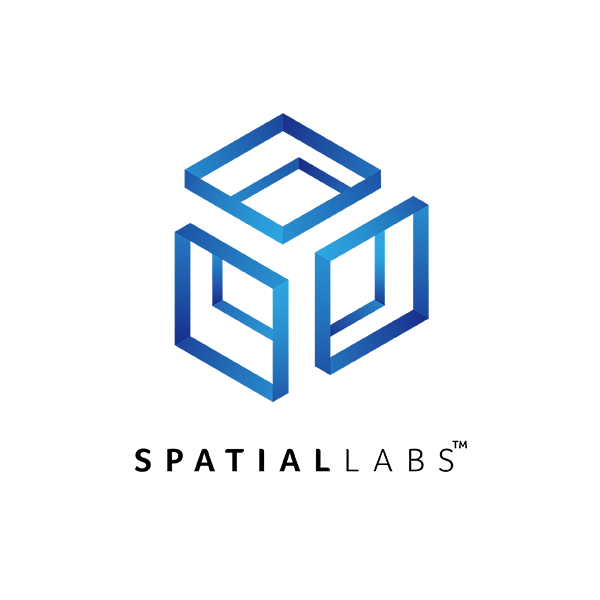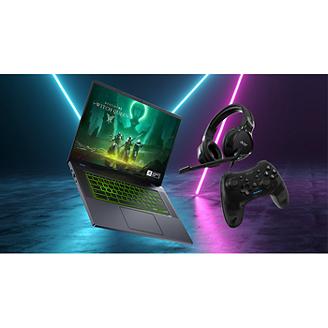-
How NotebookLM is About to Change the Way You Learn
Learning today isn’t just about finding information - it’s about making sense of it. Whether you’re studying for a course, researching a topic, or trying to get through a stack of articles, the challenge is often organizing everything and understanding how it all fits together.
NotebookLM aims to solve that problem. Built by Google as an AI-powered research and study assistant (you can check it out directly here), it helps you work directly with your own materials such as notes, documents, transcripts, and articles into an interactive workspace where you can ask questions, generate explanations, and explore ideas more clearly. Instead of searching the web, NotebookLM focuses on what you give it, helping you build a deeper understanding of the content you’re already working with.
In this article, we’ll cover:
* What NotebookLM is and how it works
* How it differs from a general-purpose AI chatbot
* Ways it can support studying, research, and self-directed learning
* Key features that benefit students and educators
* A brief look at where NotebookLM might go next
What Is NotebookLM and How Does It Work?
NotebookLM is Google’s AI-assisted research and learning tool designed to help you work more effectively with your own materials. Unlike general AI chatbots that pull from the broader internet, NotebookLM focuses entirely on the documents, notes, and sources you upload, creating a controlled and personalized environment for studying or research - something especially appreciated by Educators, who can align content closely with their syllabus when preparing lessons.
When you create a notebook, you can add PDFs, Google Docs, transcripts, or pasted text. NotebookLM then analyzes your content and allows you to ask questions directly about your sources, generate summaries or explanations, create outlines and study guides, and identify key themes, connections, or inconsistencies. Because it stays grounded in your materials, the responses tend to be more focused and relevant to your specific content. In essence, NotebookLM functions less like a general chatbot and more like a personal research assistant, helping you interpret, organize, and build understanding from the information you’re already working with.
How NotebookLM Differs from other LLMs
Most AI chatbots are already designed to answer broad questions by pulling from a wide range of online information. NotebookLM works differently. Instead of searching the internet, it stays grounded in the specific materials you’ve added to your notebook.
Here’s what sets it apart:
* Source-anchored responses: NotebookLM only uses your uploaded documents as its knowledge base, making answers more focused, relevant, and predictable.
* Built-in document understanding: It can summarize long texts, compare sections, extract key points, or clarify concepts directly within your materials.
* Structured workspace: Rather than being just a chat window, NotebookLM organizes content into notebooks, making it easier to manage readings across different classes, research projects, and other class materials.
* Designed for deeper learning: The tool helps you generate study guides, outlines, explanations, and follow-up questions all tailored to the sources you provide.
This makes NotebookLM less of a general conversational tool and more of a purpose-built companion for learning, research, and content analysis. You can watch a quick video of exactly how it works and get started here:
https://www.youtube.com/watch?v=6dHmu1GALmA
How NotebookLM Supports Learning and Research
NotebookLM is designed to make it easier to understand complex material, organize information, and stay focused on what matters. By working directly with the content you upload, it helps streamline tasks that typically take time and mental energy.
Some of the ways it can help include:
* Summarizing long readings
* Creating structured and scalable study materials
* Clarifying concepts and terminology
* Highlighting connections across documents
These capabilities make NotebookLM not only practical but also adaptable for a wide range of learners. Teachers and educators can define the scope and level of information appropriate for different grades, ensuring that students absorb material at the right pace rather than being exposed to unlimited or off-topic content from the broader internet.
NotebookLM also supports accessible learning through features such as audio overviews, allowing students to listen to summaries or explanations of their materials - an option that can be especially helpful for learners with special needs or different learning preferences. By turning scattered notes, transcripts, and articles into a single, interactive workspace, it allows learners to focus on comprehension and insight rather than on managing information.
Always Improving: Recent New Features
If you are already familiar with NotebookLM, you should be aware that it continues to evolve with several recent improvements that make it even more capable as a personal learning assistant. These upgrades include:
* Larger context window: Now able to handle bigger readings and more complex notebooks than before.
* Smarter, more coherent reasoning: Responses are clearer and better structured.
* Better memory across chats: Retains context more effectively, making follow-up questions more meaningful.
* ‘Discover Sources’: Can now suggest helpful web references to complement your own materials.
* Expanded file support and seamless Gmail/Drive integration: Allows for more flexible uploading for Word Documents, PDFs, and working directly with Google Workspace files.
Together, these enhancements make NotebookLM not just a tool for organizing notes, but a more intelligent, responsive companion that adapts to your learning and research needs.
Where NotebookLM Might Go Next
While NotebookLM is still evolving, its direction is clear: creating a more personalized, source-grounded way to learn. As AI tools become more integrated into everyday study routines, NotebookLM has the potential to support even more formats, richer collaboration features, and deeper integrations with the apps students already use.
For many learners, this also raises the importance of having devices that can support AI-driven study tools smoothly. Acer’s range of Chromebooks, including models designed for students and classrooms such as the Acer Chromebook Plus Spin 514, such as the Acer Chromebook Plus Spin 514, offer seamless access to NotebookLM and Google Workspace. With its convertible 2-in-1 design, 14-inch WUXGA display, and all-day battery life, it’s well suited for reading, research, and AI-assisted learning workflows. College students who purchase a Chromebook Plus for themselves can also enjoy 12 months free of Google AI Pro (a nearly $240 value), making it an accessible way to explore AI-enhanced learning from day one..
NotebookLM is still new, but it’s already changing how people understand and interact with their own materials. The best way to see its potential is to try it with content you’re working on right now - whether it’s a class reading, a research topic, or notes from a project.
Featured Products
Chromebook Plus 514
Chromebook Plus 516
Chromebook Plus Spin 514
Learn More
Learn More
Learn More
-
Acer Nitro V 15: Best Budget Gaming Laptop in 2025?
Searching for the best budget gaming laptop? Well congratulations because you’ve just found the best cheap gaming laptop out there, the Acer Nitro V 15. Instead of a cheap gaming laptop, perhaps we should say best value gaming laptop, as the Acer Nitro V 15 is a compact beast that perfectly balances portability and performance.
For committed gamers who demand smooth Full HD play combined with reliable multitasking and ever-stable performance, this isn’t only a good budget gaming laptop. It’s a ticket to jump into gaming missions whenever and wherever you are.
A potent combination of Intel processing, NVIDIA graphics and a 15.6” display, there’s much to discover about the Acer Nitro V 15. So let’s jump right in and take a look at the tech specs of the Acer Nitro V 15 Gaming Laptop - ANV15-52-778V2 currently available for the wallet-friendly price of $1,049.99.
* Operating System: Windows 11 Home
* Processor: Intel® Core™ i7-13620H processor Deca-core
* Processor Speed: 2.40 GHz
* Processor Speed (turbo): 4.90 GHz
* GPU: NVIDIA® GeForce RTX™ 5050 with 8 GB dedicated memory
* Display: 15.6" Full HD (1920 x 1080) 16:9 IPS 165 Hz
* Display Screen Type: Active Matrix TFT LCD
* Display Screen Technology: ComfyView (Matte); In-plane Switching (IPS) Technology
* Memory: 16 GB DDR4 SDRAM
* Memory Slots: 2
* Storage: 512 GB
* Bluetooth: Bluetooth 5.1 or above
* Interfaces/Ports: HDMI, USB x 4, Audio in/out
* Battery Type: 76 Wh
* Maximum Battery Run Time: 8 hours
* Dimensions: 14.3” x 9.4” x 0.92”
* Weight: 4.66 lb
Power and portability
As you can see from these ever-tasty tech-specs, this is truly a prince among budget gaming laptops. Let’s begin with the brains of the beast and see what makes the Acer Nitro V 15 the perfect blend of power and portability. The Intel® Core™ i7-13620H processor is a deca-core processor with 6 performance cores and 4 efficiency cores, topped with a maximum turbo boost of up to 4.9 GHz. Here you have a CPU tailored to balance gaming excess with everyday tasks and productivity. Keep up with whatever you need to get done, from fast-paced gaming, to intense multitasking, and everything in between.
Graphically genius
Still wondering what is the best gaming laptop for you? Well the Acer Nitro V 15’s NVIDIA® GeForce RTX™ 5050 Laptop GPU with dedicated GDDR6 memory may help to sway your opinion about this device! This GPU is ready to drive modern gaming experiences at Full HD resolution, and with dedicated video memory, 8GB of VRAM handles visual workloads without leaning heavily on system RAM. Tied in with the CPU, this graphics card delivers finely tuned graphic excellence across all game genres from FPS to open world exploration.
Full HD Display
A portable full HD display is something to be proud of, and the Acer Nitro V 15’s 5.6-inch Full HD 1920×1080 display is a vision to behold. Fast and speedy play is the name of the game, and this display delivers refresh rates up to 180 Hz and response times up to 3 ms, depending on configuration. Paired with the GPU, the full HD resolution makes whatever you’re playing look fantastic. And from all angles, thanks to IPS technology and Acer’s matte ComfyView surface. Color-wise the Acer Nitro V 15 has got you covered with up to 100% sRGB color. Creators and gamers alike can benefit from the rich color accuracy this laptop delivers.
Memory and storage
All this color and speed mean nothing without solid memory and storage capacity. Well fret not, for the Acer Nitro V 15 has both, in droves. 16 GB of DDR4 memory in a dual-slot configuration provides ample memory as well as flexibility for future upgrades. For all your files and more, 512 GB PCIe NVMe 4.0 SSD means fast game loading, really rapid boot times, and solid responsiveness whatever you’re doing.
Connect with clarity
Connectivity is a must in all devices, and the Acer Nitro V 15 doesn’t disappoint. As you’d expect, this laptop has HDMI®, four USB ports, and an Ethernet port, as well as audio line-in and line-out. Headsets, peripherals, and external displays (if needed) can all be plugged while you play, without any friction.
For occasions where reliability is critical, Gigabit Ethernet lets you get wired in, while everyday connectivity is covered by the Wi-Fi 6 (IEEE 802.11 a/b/g/n/ac/ax) and Bluetooth 5.1 or above. Built-in webcam and mic ensure smooth communications, while Acer’s suite of AI-powered tools including Acer PurifiedVoice™ and PurifiedView™ massively improve call quality.
Professionally portable
Where many budget laptops fall in the trenches, the Acer Nitro V 15 shines. The 76 Wh lithium-ion battery has a maximum runtime of up to 8 hours. That’s a full workday of Nitro V 15 power at your fingertips wherever you venture. The 135 W power adapter delivers fast charging when you need it, but on-the-go gaming, browsing, study, or work is the forte of the Acer Nitro V 15 budget gaming laptop.
In true Nitro style, the V 15 is black and discreet, able to seamlessly blend in a gaming den or professional environment. Weighing a mere 4.66 lbs and with a height of 0.93 inches, a width of 14.3 inches, a depth of 9.4 inches you can carry this laptop to work, school, or gaming meet-ups without ever feeling weighed down!
Best budget choice?
We hope you’ve enjoyed today’s exploration of the Acer Nitro V 15 gaming laptop. A practical, fun choice for gamers who require a balance of power and portability, the Acer Nitro V 15 stands out from the crowd. The Intel Core i7-13620H processor and RTX 5050 GPU provide serious capability for on-the-go Full HD gaming. 15.6” Full HD IPS display, PCIe 4.0 storage, and modern wireless support round out a machine designed for smooth, reliable everyday use. If you’re looking for an affordable gaming laptop with perfected performance, the Acer Nitro V 15 shows that portable hardware can still deliver raw power and versatility. Finally, remember to visit the Acer Store to explore other devices, where students can enjoy 15% off.
Recommended Products
Acer Nitro V 15 (RTX 5050)
Buy Now
Acer Nitro V 16 (RTX 5060)
Buy Now
Acer Nitro V 16S (RTX 5070)
Buy Now
-
Best Throwables to Use in Arc Raiders
If you want to win more fights in ARC Raiders, you need to know which grenades actually make a difference. The game offers a long list of throwables, but many look stronger in the description than they are in real combat. With the 1.3 update changing how explosive damage works, the meta has shifted again, especially for corner fights, anti-ARC bursts, and extraction pressure. This guide breaks down the ten best grenades in ARC Raiders, explains what makes each one useful, and helps you choose the right options for both PvP and PvE so you can avoid wasting resources on tools that will not carry their weight.
10. Gas Grenade
The Gas Grenade is a niche tool, but it becomes dangerous when you understand what it actually does. Instead of dealing damage, it drains the opponent’s stamina, and a player with no stamina cannot perform a normal roll or sprint to reposition. This means the grenade will not force someone out of cover through raw pressure, but it will leave them unable to escape once you start your push. In tight rooms or narrow hallways, it can trap an enemy long enough for you to take control of the fight.
9. Li'l Smoke Grenade
The Li'l Smoke Grenade earns its place on the list because of how consistently useful it is, even with its smaller cloud and shorter duration. It gives you quick, cheap cover when crossing open ground, looting a risky body, or breaking a sniper’s line of sight. While it is not as powerful as the full-size smoke grenade, its low cost makes it easy to bring several into every raid without thinking twice. It is a simple tool, but it adds real safety to almost any situation.
8. Shrapnel Grenade
The Shrapnel Grenade is designed mainly for PvP, where its burst of razor-sharp fragments can punish players holding tight corners or predictable angles. It has a longer fuse and a smaller radius than other options, but the fragmentation effect can catch someone as they move or try to reposition. While its raw damage is lower than a snap blast, it excels as a cheap and reliable area denial tool that forces opponents to give up their position. Used correctly, it can disrupt pushes, break defensive holds, and create openings for you to take control of the fight.
7. Wolfpack Grenade
The Wolfpack Grenade is one of the strongest anti-ARC tools in the game because of how reliably it targets and destroys flying units. When you throw it, the drones break apart and home in on enemies like Wasps, Snitches, Hornets, and especially Rocketeers, often deleting them before they become a threat. It can also contribute solid damage against larger ARC, though its spread makes it less efficient on multi-hitbox bosses. While it excels in PvE, it is essentially wasteful to use in PvP because the rockets do not track players well and offer far less value than cheaper, more flexible grenade options.
6. Heavy Fuse Grenade
The Heavy Fuse Grenade delivers strong explosive damage, but its long fuse time makes it difficult to use effectively. When thrown, it often rolls or bounces into awkward positions, giving opponents plenty of time to move out of the blast radius before it detonates. In PvE, it can still be useful for layering damage under large ARC units, but the delay means it will occasionally miss even stationary enemies. Its power is undeniable when it connects, yet the slow activation and high crafting cost limit its overall practicality compared to faster, more reliable options.
5. Blaze Grenade
The Blaze Grenade was once one of the strongest damage tools in the game, but the 1.3 update reduced its overall effectiveness against ARC units by limiting how many fire ticks can stack on multiple hitboxes. Even after the nerf, it remains a dangerous option in PvP because the spreading fire can trap players in rooms, corners, or narrow hallways, forcing them to take heavy damage if they stay put. The grenade’s value comes from how quickly the fire covers an area, punishing anyone who hesitates or tries to hold a position for too long. It is less efficient for clearing ARC now, but it is still a powerful way to control space and overwhelm players in close-quarters fights.
4. Snap Blast Grenade
The Snap Blast Grenade is a reliable mid-tier explosive that sticks to players, ARC units, or surfaces, which makes its placement much easier to control. Its damage is lower than a heavy fuse grenade, but it activates more consistently and is far cheaper to craft, giving it a strong cost-to-value ratio. Because it adheres to its target, it works well for area denial, corner pressure, or finishing weakened ARC units without worrying about a roll or bounce sending it off course. It lacks the raw power of higher-tier grenades, but its mix of reliability and affordability makes it a dependable choice in most raids.
3. Showstopper
The Showstopper is one of the strongest control grenades in the game because it detonates the instant it hits a target, creating a reliable stun that shuts down both players and ARC units. Against players, the forced stand-still animation lasts long enough to break corner holds, expose defenders, or secure a free opening shot. Against ARC, it can bring Rocketeers out of the sky or lock down dangerous units so you can finish them safely. Its only real drawback is the risk of throwing it too close and stunning yourself, but in the right hands, the Showstopper consistently turns chaotic fights in your favor.
2. Smoke Grenade
The full-sized Smoke Grenade is one of the most versatile utility tools in ARC Raiders, giving you a large, long-lasting cloud that completely breaks line of sight. It is invaluable during extracts because it lets you loot safely, revive teammates, or cross exposed terrain without getting picked off by snipers or third parties. In PvP, it creates chaos by allowing you to close the distance with close-range weapons or reposition before your opponent can react. You can also pair it with a Tagging Grenade to gain vision inside the smoke, letting you track and shoot an enemy who can no longer see you at all. Its wide coverage and long duration make it one of the most consistent and dependable grenades in the game.
1. Trigger 'Nade
The Trigger 'Nade is one of the strongest and most flexible grenades in the game because you can detonate it whenever you choose. This manual trigger lets you throw multiple grenades back-to-back and pop them all at once, creating devastating burst damage that can delete ARC units or strip a player’s shield in an instant. It lands reliably, hits hard, and avoids the problems caused by long fuse timers or unpredictable bounces. Whether you are ambushing a player, finishing a Bastion, or controlling a tight choke point, the Trigger 'Nade consistently delivers some of the highest value you can get from a throwable.
Conclusion
The grenade system in ARC Raiders offers far more depth than it first appears, and choosing the right tool can decide whether you win or lose a fight. Some grenades thrive on raw power, others excel through utility, and a few are only strong when paired with the right combo, like smokes with tagging grenades. Once you understand how each option fits into both PvP and PvE, it becomes easier to build a loadout that matches your playstyle and the challenges of each raid. No matter how you approach the game, mastering these top grenades gives you a noticeable edge and helps you stay one step ahead of both ARC and rival raiders.
For more Arc Raiders tips, guides, and detailed breakdowns, be sure to check out our other articles below:
* How to Level Fast in Arc Raiders: Best EXP Methods
* Arc Raiders Enemy Guide: All ARC Enemies, Weakpoints, Loot, and XP
* Best Skills to Upgrade in Arc Raiders
Recommended Products
Predator Helios 18 AI (RTX 5090)
Buy Now
Predator Helios Neo 18 AI (RTX 5070Ti)
Buy Now
Acer Nitro V 16S (RTX 5070)
Buy Now








